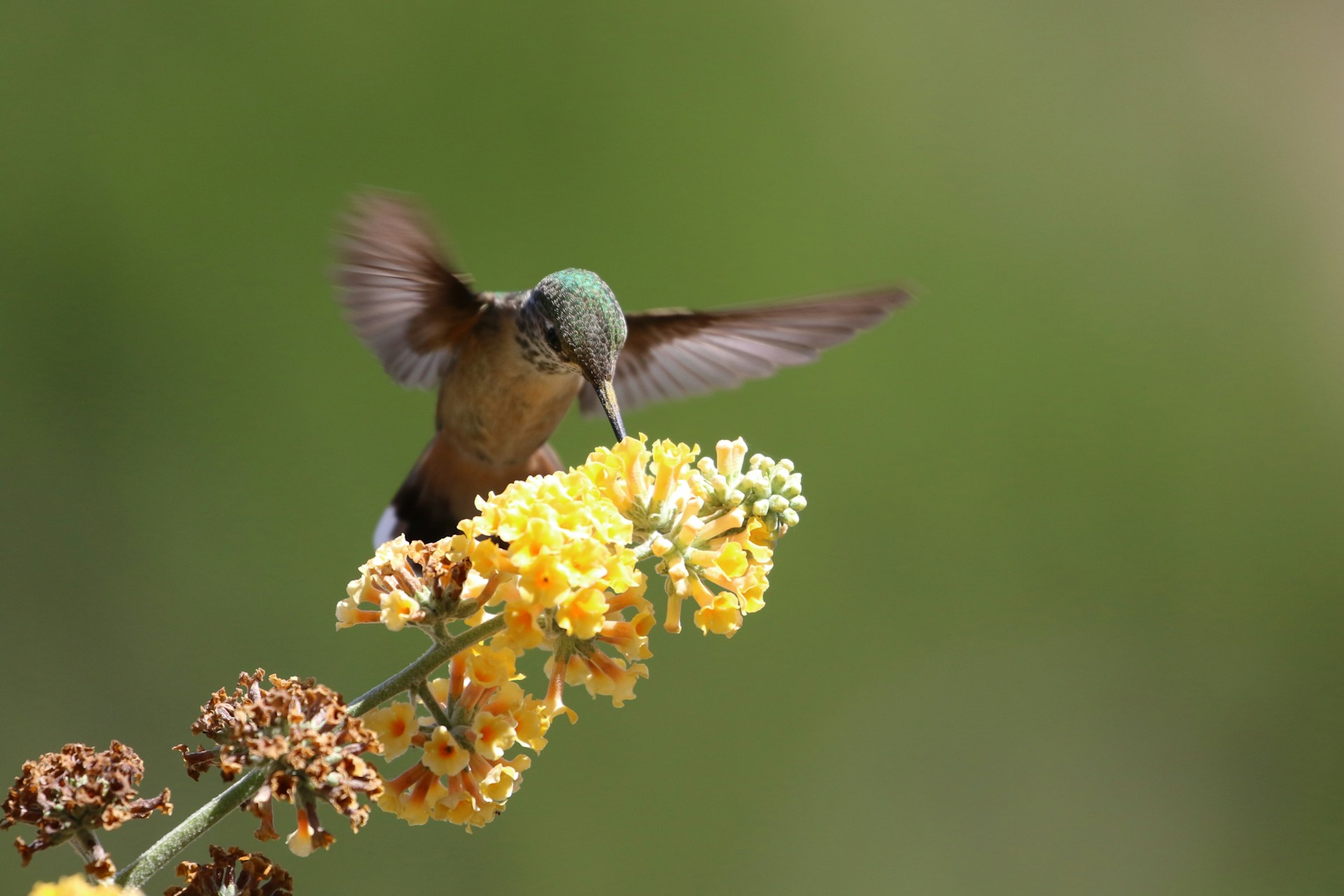Physical Differences
When it comes to distinguishing male from female hummingbirds, noticing physical characteristics is a great starting point. As mentioned in this source, the first notable difference between the two sexes is their size. Males are usually smaller than females, a trend that is typical for many bird species.
Other physical characteristics to look out for are differences in the beaks and wings. Male hummingbirds have a shorter beak compared to the elongated beaks of females. This adaptation is believed to aid in their feeding style which differs from the females’. Additionally, males possess a definitive “notched” tail, in contrast with the females’ rounded tail. Lastly, the wing shape differs slightly as well, with males having more pointed wings while females have slightly rounded ones.
Coloration
Coloration plays a significant role in differentiating male from female hummingbirds. According to birdsandblooms.com, male hummingbirds possess a generally more vibrant coloration compared to females. The throat area or “gorget” of the males is especially noticeable, featuring shiny, iridescent colors.
Females, on the other hand, tend to have duller coloration, typically a blend of green and white shades. This difference in coloration helps to protect the females by blending them into their surroundings and therefore keeping them safe from predators while they are tending to their nest.
Behavioral Traits
In terms of behavior, there are distinct traits that can help in identifying the sex of a hummingbird. Birdzilla.com highlights the fact that female hummingbirds are known to be more aggressive when defending their territory. Males primarily focus on attracting a mate and keep a watch over their territory, while females are involved in building the nest and raising the young.
Males tend to be more active and engaging in their movements, flitting about swiftly, whereas females are less active and often spotted perching on branches or hovering over flowers.
Nesting Habits
Nesting habits also draw a clear line between male and female hummingbirds. As noted in the article on birdzilla.com, it is solely the female hummingbird who takes up the responsibility of building the nest and incubating the eggs.
Females carry out all the tasks related to nest construction, often creating a compact, cup-shaped nest using plant materials stuck together with spider webs. The male’s involvement ends after mating, leaving the female to raise the young alone. So, if you spot a well-crafted nest that’s a few feet above the ground on the branch of a tree or shrub, it’s likely the work of a diligent female hummingbird.
<small>Image source: https://unsplash.com/photos/gray-and-brown-hummingbird-perching-on-yellow-petaled-flower-osUkhti4cak </small>

